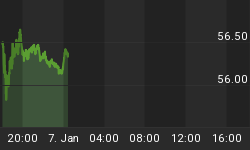Fed Brings High Anxiety

During the past several weeks, we have read numerous accounts of "we are reducing risk before the Fed", which has a very rational fear-of-the-unknown basis. Over the same period, we cannot recall reading one anecdotal example of any institutional investor that was "loading up on risk before the Fed", which means one possible scenario is lopsided expectations headed into the Fed; only time will tell.
What Is The VIX Telling Us?
The Chicago Board Of Options Exchange (CBOE), the home of the VIX "fear index", published the following comments on Friday, December 11:
"The Federal Open Market Committee meets on December 15-16 and is widely expected to announce a rate increase at the conclusion of the two-day meeting. Thus far, the imminent prospect of tighter monetary policy has made few waves. In the equity market, the CBOE Volatility Index (VIX Index) is up for the week, but has exactly the same value (22.55) as it had on October 1, when a rate hike by December 2015 was viewed as improbable. The CBOE/CBOT 10-year U.S. Treasury Note Volatility Index (TYVIX Index) is at almost at the same value as in October. However, volatilities indexes of foreign exchange markets are lower.
"Moreover, forward prices indicate that the market does not anticipate an increase in volatility in stocks through January 2016, and suggest volatility may even go lower. VIX is now in backwardation for the near term. The term structure of EUVIX has switched from backwardation to flat as EUVIX has dipped over the last week."
VIX In Backwardation
Can we learn anything about stock market odds following periods of backwardation in the VIX? We do not claim to be experts in interpreting the VIX's term structure. Out of curiosity, we searched for "VIX backwardation and stock market performance." We found an admittedly anecdotal piece of evidence in the form of the chart and below, which was published on Business Insider in January 2014:
Dave Lutz, head of ETF trading and strategy at Stifel Nicolaus, points out that the 3-month VIX curve has dipped into backwardation. In other words, near-term VIX futures have now become more expensive than longer-term VIX futures, suggesting traders are betting that volatility in the future will be lower than it is now.
"When this happens on a CLOSING basis, we have seen sharp short-term rallies over the last year," says Lutz.
"Why? Too much near-term stress has built up, pushing the cost of protection for today higher than the cost of protection 3 months from now."
The chart below shows that when the VIX curve goes negative (blue bars), the S&P 500 (red line) tends to rally. Barely visible at the far right of the chart is the small dip below zero that has occurred today.

Is There Any Other Basis For Hope?
This week's stock market video looks at areas of possible support for stocks and asks the question:
Are the financial markets following the first-rate-hike script or a much more concerning one?
Has The Market Left The Bottoming Process Script Behind?
The observable evidence has deteriorated over the past six trading sessions. However, it has not deteriorated in a manner that is all that much different than countertrend moves during the bullish bottoming processes in 2010 and 2011 (see charts below).


Market breadth has been weak, but a recent comparison of 2010, 2011, and 2015 also says "2015 breadth is concerning, but not much different than 2010 or 2011". New lows have been expanding relative to new highs, but a separate analysis shows this is not a bull showstopper when taken in isolation.
Outcome Still To Be Determined
The Fed meeting is less than two trading days away. If stocks have already entered a bear market, the bear market will last much longer than two days. The hard data and markets have come down to the fine line between patience and risk management. The bulls have very little margin for error, but the outcome is still to be determined.
Under our approach another down week in stocks will most likely call for some defensive chess moves (maybe significant moves). There is a long way to go between now and 4 pm on Friday, December 18, especially given the Fed statement will be released Wednesday.















